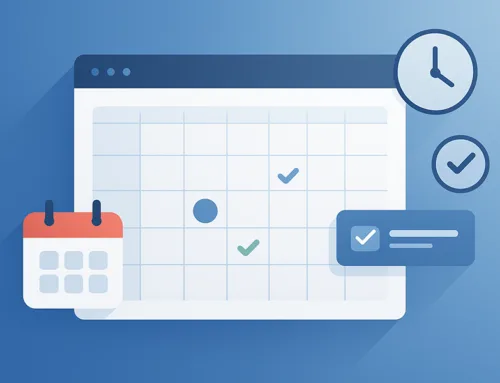Any business owner who has even the slightest interest in marketing will know that the word du jour is “content.” Producing it, sharing it, reading it; content is king right now.
Why?
Because content is a subtle but highly effective marketing tool that is used to engage consumers at the earliest stages of the buying cycle. It’s also relatively inexpensive and easy to produce if you know how.
If you are thinking about producing some/more content, it’s high time to consider planning killer content.
What Sort of Content?
Content isn’t merely confined to a blog on the company website, nor is it just news about your recent achievements—content comes in many forms. For those that favor the written word, industry news is highly effective – this is non-promotional, unbiased reporting of developments in the sector. Guides and evergreen articles are great ways to ensure a steady flow of traffic to the website over months, if not years if they are continuously relevant and stay fresh for visitors over a long period.
Those who fancy branching out a bit might like to consider video content, a trend that is gaining in popularity in recent times because of the YouTube and Instagram. Alternatively, you could record podcasts available for download.
Write Headlines that Demand Attention
The title of the post is just as important as the quality of the content because it acts as a first impression of the piece. The purpose of the title is to attract and inform; you want to create headlines that clearly tell your audiences what the piece is about while also sparking enough interest that they click and read the entire post.
- An attention-grabbing headline is one that naturally incorporates keywords in 8 words or less. The headline should also be catchy and emotive.
- Incorporate enticing phrases such as “top 10 ways to…. Or “How to…” whenever the theme allows you, integrate it, and you’ll notice a curiosity among readers.
For example, “Top 10 ways to improve your personal branding” sounds more captivating than “Improve your branding by doing this.”
The first example gives the impression that the post will be informative and interesting; however, the second example is too vague and boring.
Keep it Relevant and Engaging
There is a lot of content out there, so to differentiate yourself from the masses, you’ll need to create content that offers something of value to the reader.
Essentially, you need to produce something relevant and engaging. This can range from new regulations to tongue-in-cheek research; it matters not, providing it is something that your readers will want to know.
Tailor your tone of voice to suit the audience and limit the use of jargon when not appropriate so as not to alienate anyone. It’s also a good idea to keep articles fairly short and break up blocks of text with subheadings and images to make them easier/more appealing to read.
Great Meta Description
The Meta Description is an extension of the headline that search engines use to summarize what the post is about. The Meta description is very important as it gives the searcher a preview beyond just the title.
- In 160 characters or less, you have to compel the searcher to click and read the rest of your post.
- Much like the headline, the Meta description has to be informative and interesting and can include a call to action if one isn’t clear.
A solid example of an optimized meta description would be:
“Go through a tried and tested formula for developing content that ranks and amplifies user experience on the website.”
Find Your Own Voice
What can you write that hasn’t already been covered?
A lot of webmasters get stuck on the creation aspect of content writing because they feel like everything has been talked about already, and it’s true. The internet is overrun with repetitive content; the task is less about finding new things to talk about and more about finding a new way to tell the same story.
- You have to develop your own unique voice that connects with your target audience.
- Once you have established your convertible voice, you will be able to attract visitors that get excited to read your content and make positive actions.
Bear SEO in Mind
Google, as you will be aware, pretty much defines what we see when we search the internet. Therefore, it’s wise to adhere to some of its rules regarding content and SEO.
The biggest tip is not to include lots of links – Google hates this. It might be tempting to link three times to your top-selling item, but you’ll be penalized for this. If you can incorporate it naturally, once, you’ll be fine, but overdoing it will not only look contrived and hard-sell, it won’t appear in the search results.
Google does like fresh content though, especially content that is written by several different authors. Therefore, post new pieces as regularly as you can.
Soft Sell
In the world of blogging for conversion, soft-selling wins out over hard-selling tactics. Hard selling is much too abrasive and direct for the internet seeker; the last thing a visitor wants to encounter when they are casually searching is annoying “buy it now” banners and salesy content.
Instead of laying it on so thick, approach your visitors in a subtle, more personable way. In-between offering quality content, you can sell softly by creating informative videos about your products or services and offering attractive coupon codes at the end. You can also offer free copies of your guides, templates, or ebooks.
When you offer valuable assets, your visitors are more likely to share with their community and ultimately make a purchase as they begin to view what you offer as valuable.
Offer Varied Content
Long gone are the days of simple textual content; the trendiness and likability of digital media have given a whole new meaning to the word content.
- Your quality content can be in the form of text as well as videos, audio, infographics, and pictures.
- As long as it is valuable, relevant to your target audience, and has the business to convert, it is worth sharing.
Your visitors will appreciate the time and effort you take to provide varied content types and reward you with their trust and loyalty.
Don’t Forget to Share it
The point of creating content is to subtly position yourself as a leader in your industry, an expert in the field who is up to date with current events – someone trustworthy from whom readers will perhaps one day make a sale. How can you do this if no one sees your articles? Hence you must share your content; simply leaving it to languish on your website is not sufficient.
- Post your articles on Twitter, Reddit, Facebook, and LinkedIn, adding a question to encourage discussions and comments.
- Include a link to your article in your email marketing newsletters. Refer to it when writing subsequent articles, if appropriate.
- It’s also essential that you add sharing buttons to all of your articles so that readers can share them too – a practice that could extend your reach far wider than you alone could manage.
Final Note
Content: it improves brand awareness, reputation and gets your message out there – practically at no cost. Just like any other relationship, building a brand/customer relationship takes patience and constant energy, it is not a “one and done” thing.
If your objective is to convert your casual visitors into regular fans that take action, you have to be diligent with your strategies. You also need to be approachable and available to respond to questions and concerns. And, you have to always strive to offer high-quality content that would solve the problems your visitors came to you to find.
Can you afford not to use content marketing?





